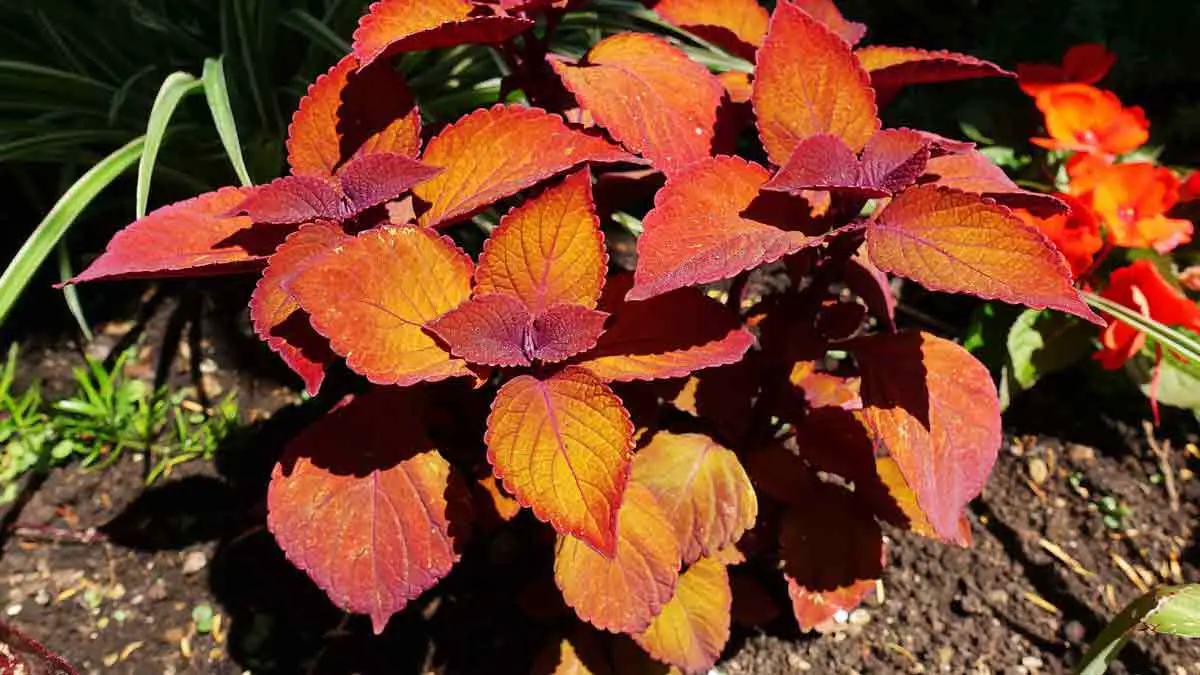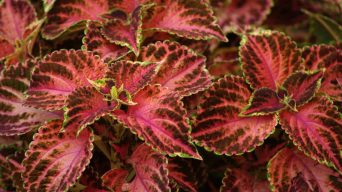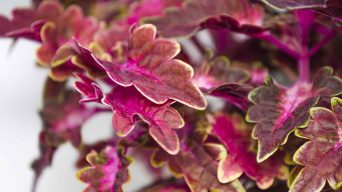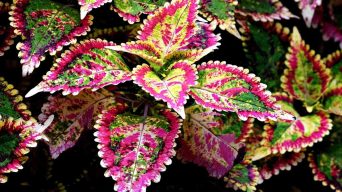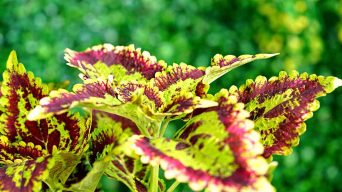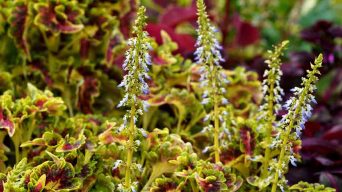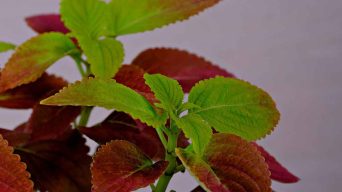Coleus leaves can turn yellow due to overwatering, underwatering, extreme temperatures, overexposure to sunlight, or disease. To save the plant, move it to well-drained soil and reduce watering. Regular maintenance, like removing yellow leaves and fertilizing every two weeks, can also help keep the plant healthy.
Coleus plants are beautiful, easy-to-grow houseplants that make a great addition to any indoor garden.
However, as with many other houseplants, coleus leaves can sometimes turn yellow.
While this is an alarming sight for plant parents, the good news is that there are usually simple solutions to get your coleus back on track.
In this article, we’ll explore why your coleus leaves may be turning yellow and what you can do to fix it.
Reasons for Yellowing Leaves in Coleus Plants
The first step in addressing any problem with your coleus is to identify the cause of yellowing.
There are many potential culprits, such as: :
Overwatering and Waterlogged Soil
This is one of the most common causes of yellow leaves in coleus plants.
When you overwater your coleus plant, the roots can become overwhelmed and unable to absorb the excessive moisture.
This can lead to root rot and cause the leaves to turn yellow due to lack of oxygen.
To fix this problem, it’s important to let the soil dry out completely between waterings and check for signs of root rot.
Underwatering
Underwatering is a common culprit of yellow leaves in coleus plants.
When the plant’s soil doesn’t receive enough water, the roots can’t absorb nutrients and moisture, resulting in wilted or limp leaves.
The older leaves will start to turn yellow first; younger foliage won’t be affected until later on.
To prevent underwatering, check your soil moisture daily and water as needed.
If you’re unsure how often to water your coleus, stick your finger into the soil up to the second knuckle – if it feels dry, it’s time to give your plant some hydration!
You may also want to consider using a moisture meter for an accurate reading of when it’s time to water.
Extreme Temperatures
Extreme temperatures can also lead to stressed-out coleus plant leaves that turn yellow.
Depending on the variety of coleus, they can be heat-tolerant or cold-tolerant – but not both. If you’re growing your coleus outdoors and experiencing a sudden drop in temperature, you may find yellow leaves starting to appear.
On the flip side, if temperatures consistently exceed 85 degrees Fahrenheit (29 degrees Celsius) for too long, your coleus will likely start wilting, and its leaves will turn yellow.
To protect your plant from Temperature stress, ensure to water regularly during dry spells and shield it from harsh winds or direct sunlight when needed.
Overexposure to Sunlight
The hot summer sun can make all of us feel a little wilted, and the same goes for your coleus plants.
It’s important to remember that although these plants are used to thriving in warm conditions, too much direct sunlight can cause their leaves to turn yellow.
If you’re noticing that the leaves of your coleus plant are taking on a yellowish hue, it may be due to overexposure to the sun.
Try moving them out of direct sunlight and into an area with bright indirect light. Some partial shade can go a long way in helping to keep your coleus plants vibrant and healthy.
Lack of Light
On the other hand, lack of light can also be a significant culprit for yellowing leaves in coleus plants.
Remember, these plants love bright indirect sunlight and need at least four to six hours of it each day. If you’re noticing yellowing or wilting leaves, try moving your plant to an area with more natural light.
If you don’t have access to any direct sunlight, consider investing in grow lights so your coleus plant can receive the kind of light they need to stay healthy.
Nutrient Deficiencies or Imbalances
Your coleus plants need certain essential nutrients to stay strong, and their leaves will turn yellow if they’re not getting them.
Check the soil your plant is potted in for signs of nutrient deficiency, such as low pH levels or a lack of nitrogen.
If needed, supplement your plant’s soil with fertilizer or compost to ensure it gets the nutrients it needs.
Additionally, be sure you are watering correctly; too much water can cause leaching and make it harder for the plant to absorb the nutrients from its soil.
Pests
Pests can be a major cause of coleus leaves turning yellow. Common culprits include aphids, mealybugs, spider mites, and whiteflies.
These pests all have unique appearances and are easily spotted if you look closely at the underside of the plant’s leaves. However, they can vary in severity, so it’s important to take action quickly to prevent further damage.
To get rid of these tiny invaders, you can use insecticidal soap or neem oil applied directly to the affected area. If your infestation is particularly bad, an organic pesticide may be necessary.
Keeping the area around your coleus plant clean and avoiding overwatering can also help keep pests away.
Diseases
In some cases, yellowing leaves on coleus plants can be a sign that they are suffering from an infectious disease. Common diseases affecting coleus plants include root rot, powdery mildew, leaf spot disease, and downy mildew.
If you suspect your plant is infected with one of these diseases, it’s best to take immediate action.
Start by removing all affected leaves and apply a fungicide designed for the specific disease your plant is infected with. This will help stop the spread of the infection and also prevent it from re-occurring in the future.
Natural Leaf Yellowing
As with any living thing, your beloved coleus leaf can only last so long. The lifespan of a coleus leaf is usually between one and two years, depending on the environment it’s growing in and how well you take care of it.
If you’ve had your coleus plant for more than a couple of years and its leaves are starting to turn yellow, this could be a sign that it has reached the end of its life cycle and is succumbing to natural aging.
While there isn’t much you can do to stop this from happening, regular pruning will encourage healthy new growth that will help keep your coleus plant bushy and vibrant.
How To Treat and Prevent Yellow Leaves in Coleus Plants
Having yellow leaves on your Coleus plant can be a sign of distress, but there are some ways to get it back in shape and prevent it from happening again in the future.
It’s important to remember that the change in leaf color is usually a reaction to something else.
Here are some steps you can take to help treat yellowing leaves and get your Coleus plant looking great again:
- Make sure your coleus has proper drainage. Too much water and not enough air can cause root rot, which leads to yellow leaves. Provide good drainage by using a pot with several holes in the bottom. Add some gravel at the base of your container to ensure excess water can escape.
- Allow the soil to dry out between watering sessions. Overwatering can lead to yellow leaves, so check if the soil has dried out before you water again.
- Repot your Coleus plant every couple of years. Repotting helps to replenish the soil and provides more air and nutrients to help keep your coleus healthy. Make sure you use fresh potting soil each time.
- Reduce watering frequency. Especially if you live in a humid climate. Too much water can lead to root rot and yellow leaves.
- Improve air circulation around your plant. Move your coleus closer to an open window or use a fan on a low setting directly on the leaves to help reduce fungal infections that could be causing the yellowing.
- Check for pests. Pests such as aphids, mealy bugs, or spider mites may have infested your plant. Treat with a natural insecticidal soap if necessary.
- Make sure your coleus is getting enough sunlight. Too little light can cause yellow leaves, so try to find a spot where it will get 6-8 hours of bright indirect sunlight.
- Keep an eye on the temperature. Make sure the temperature around your plant is not too hot or cold. A sudden temperature change can shock the plant and cause yellowing leaves.
- Check for nutrient deficiencies and correct them as needed. You may notice yellow leaves if your coleus is not getting enough magnesium or iron. You can supplement these nutrients with a liquid fertilizer to help nourish your plant during the growing season.
- Prune the plant back if necessary. Yellow leaves can be caused by overcrowding and inadequate light and air circulation, so pruning them back can help the plant to get more of what it needs to stay healthy. If your coleus has developed a fungal infection, try treating the problem by removing all affected leaves.
Final Thoughts
The importance of taking appropriate action when you see yellowing in your coleus leaves cannot be stressed enough.
If left untreated, it can be devastating to the health and growth of the plant.
Fortunately, there are ways to reverse or prevent this issue, such as proper watering and fertilization, pruning off any affected leaves, and ensuring adequate lighting.
By following these simple steps, you’ll be sure to keep your coleus healthy and beautiful for years to come!

